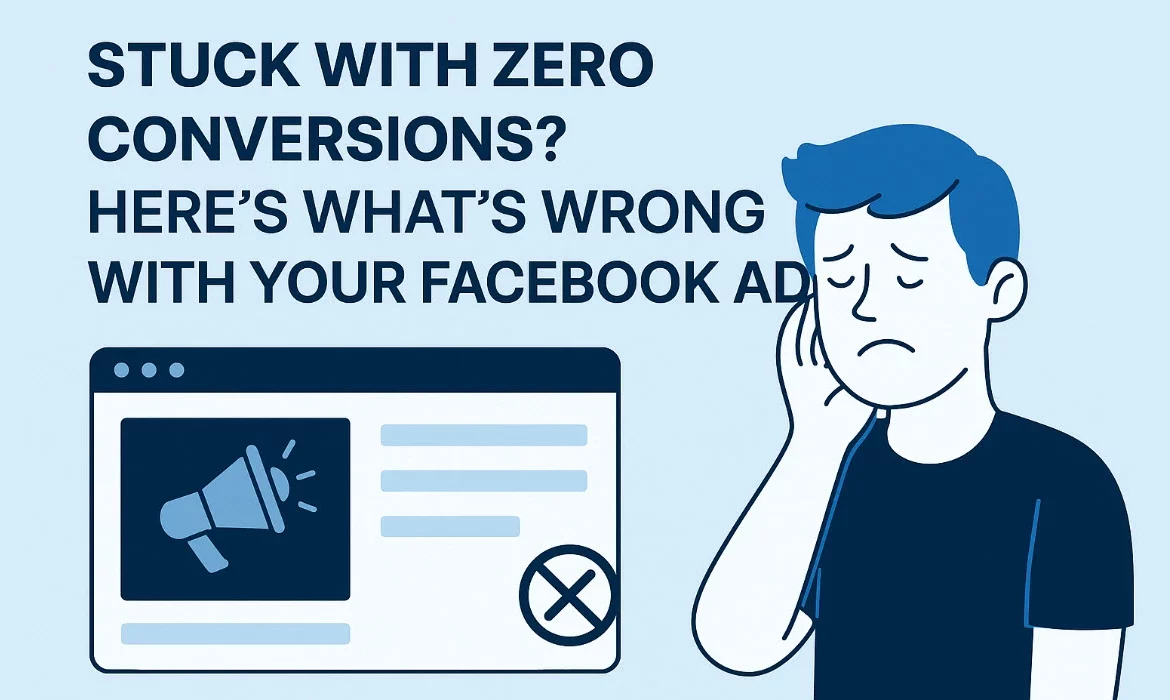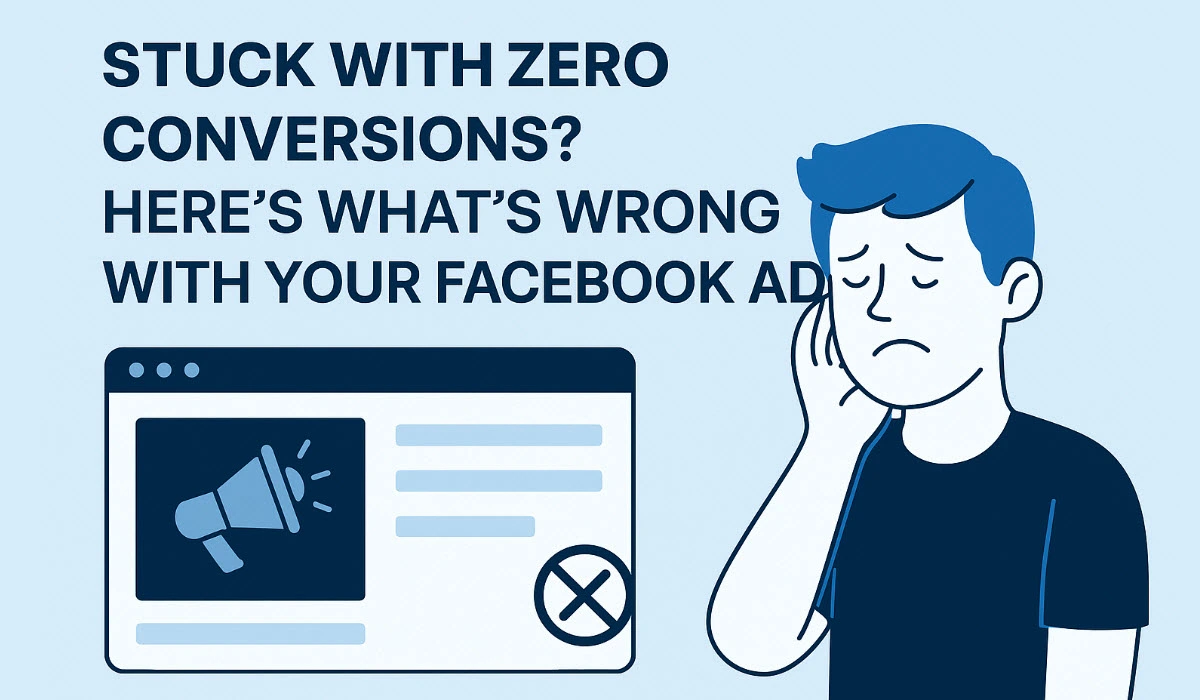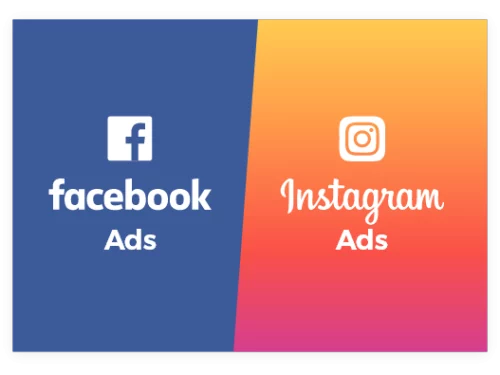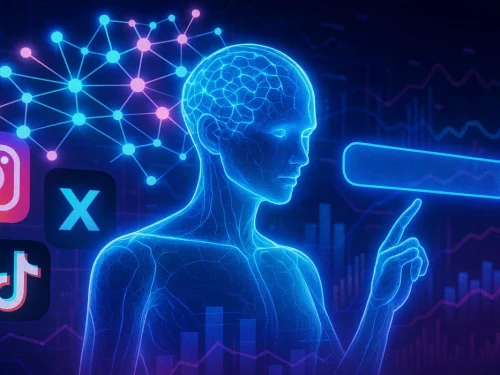Facebook ad conversions often struggle due to technical issues like pixel errors, weak messaging, poor landing pages, and inaccurate targeting. Ad fatigue, mismatched objectives, low budgets, and ads stuck in the learning phase also hurt results. Other challenges include ignoring mobile optimization, missing retargeting opportunities, ad frequency burnout, unclear offers or CTAs, and relying too much on static images instead of engaging videos or interactive content. Fixing these areas improves ad performance significantly.
Introduction
I remember sitting in my office late on a Friday night, coffee in hand, staring at the analytics dashboard. One of our U.S.-based e-commerce clients had just wrapped up their biggest Facebook ad campaign of the quarter. We had high hopes. The visuals were slick, the budget was generous, and we had A/B tested every angle imaginable. But the results? Flatline. Thousands of impressions. A trickle of clicks. And not a single conversion.
At first, I thought it might be a temporary data delay. But after a full 48 hours, it was clear: something was seriously off. This wasn’t just disappointing—it was a red flag. And as a digital marketing agency specializing in Facebook ad campaigns, I knew we had to fix it—fast. That experience led to one of the most insightful deep dives our team had ever taken into Facebook ad conversion problems. It reshaped how we approached strategy, and more importantly, how we saved many future campaigns from failing the same way.
A Real Story from the Trenches
One of our clients, a boutique skincare brand based in California, ran Facebook ads promoting their new product line. Despite professional creatives, engaging copy, and a healthy budget, the campaign failed to convert. After diving into the data, we discovered that their Meta Pixel wasn’t firing properly, their audience targeting was too broad, and the landing page didn’t match the ad’s message.
We fixed the Pixel setup, refined the audience using lookalike data from existing customers, and updated the landing page for consistency. Within three weeks, conversion rates jumped by over 260%. This experience reminded us how critical the details are when it comes to Facebook ad success—and how even well-constructed campaigns can falter without the right foundation.
The Numbers Don’t Lie
According to WordStream, the average conversion rate on Facebook Ads across all industries is 9.21%. That might sound promising, but for many businesses, getting even close to that can be a challenge. Another report from AdEspresso notes that over 60% of small businesses say they struggle with converting Facebook traffic into real sales. Source: WordStream
Understanding Facebook Ad Conversions
To improve Facebook ad performance, you must first understand how Facebook defines conversions—actions like purchases, form submissions, or app installs. Your Meta Pixel, tracking setup, and event definitions must all work together seamlessly. Without reliable data, Facebook cannot optimize delivery, and you’re left in the dark about user behavior.
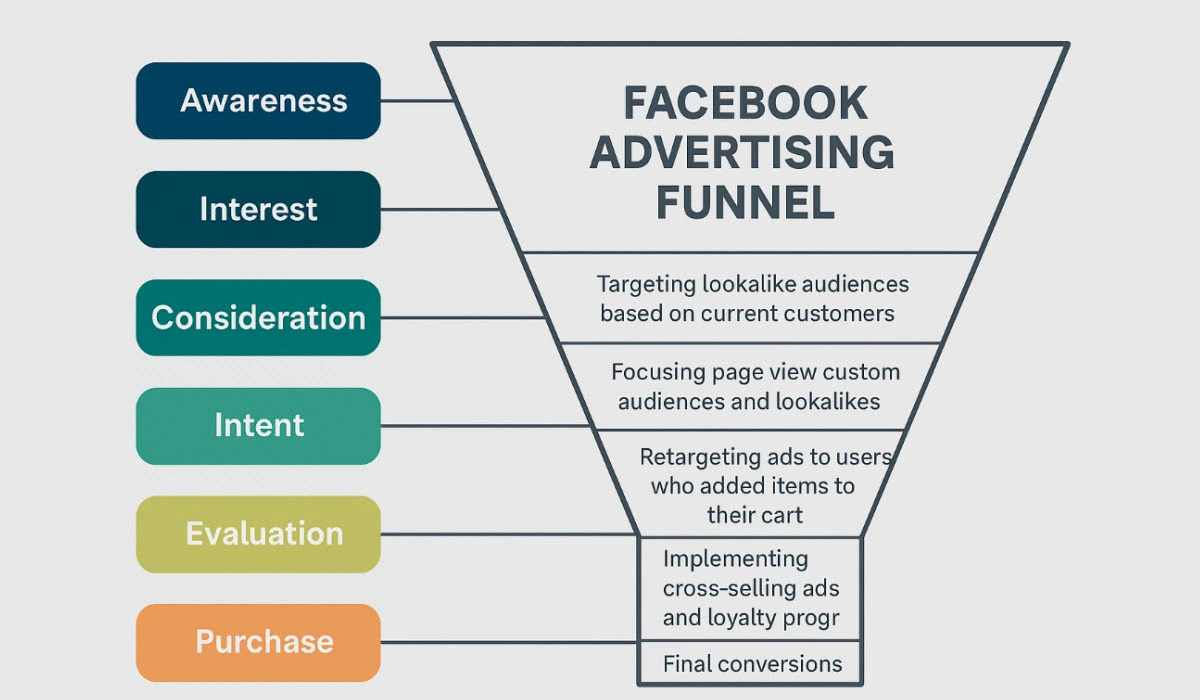
Challenges in Facebook Ad Conversions
11 Reasons Your Facebook Ads Aren’t Converting (and How to Fix Them)
1. Meta Pixel Issues
The Meta Pixel is crucial for tracking and optimizing conversions. If the Pixel is not set up correctly, Facebook won’t be able to gather accurate data on user behavior. This data is essential for retargeting, tracking conversions, and training Facebook’s algorithm to optimize delivery. Common issues include:
- Incorrect Installation: The Pixel may not be placed in the header of your website or not firing on all pages.
- Duplicate Pixels: Having more than one Pixel on the same page causes Facebook to receive conflicting data.
- Pixel Not Firing: This can occur due to JavaScript errors, conflicts with plugins, or delayed script loading.
- Outdated Pixel Code: Using older code versions can break integration or miss newer tracking features.
- Cross-Domain Tracking Problems: Especially common in e-commerce when checkout happens on a different domain.
Fix: Use Facebook’s Events Manager and the Meta Pixel Helper Chrome extension to test your Pixel. Make sure it fires on each conversion-related page. Set up Standard and Custom Events appropriately, and ensure you’ve verified your domain in Business Manager.
2. Weak Ad Copy or Creatives
Great visuals grab attention, but bad copy kills conversions. If your message doesn’t hit the right emotional or practical note, users scroll right past. Fix this by writing benefit-driven, clear copy and testing various creative formats—including video. Need help crafting irresistible ads? Check out this video guide for expert tips.
Fix: Focus on strong headlines with emotional triggers. Use real customer testimonials and product-in-use videos. Test different formats—carousel, story, and Reels. Always include a clear call-to-action and solve a specific problem your audience cares about.
3. Unoptimized Landing Pages
A high-performing ad means nothing if your landing page doesn’t deliver. Common issues include slow load times, confusing layouts, or content that doesn’t match your ad promise. Fix this by optimizing speed, removing distractions, and ensuring mobile usability. Stay compliant with Facebook’s advertising policies to avoid disruptions.
Fix: Improve loading speed (aim for <3 seconds), ensure mobile responsiveness, keep the layout clean, and place the CTA above the fold. Use persuasive headlines, benefit-focused bullet points, and minimal distractions. A/B test form lengths and placements.
4. Inaccurate Audience Targeting
Even the best ads won’t convert if they reach the wrong people. Broad audiences lack precision, while narrow audiences may be too small to scale.
Fix: Build Lookalike Audiences from high-value customers. Use retargeting for people who added to cart or visited key pages. Layer interests and behaviors smartly—don’t rely on one targeting signal alone. Exclude converted users to avoid waste.
5. Ad Fatigue
Showing the same ad too often leads to reduced engagement and negative feedback. Facebook starts throttling delivery and increasing CPMs.
Fix: Monitor frequency metrics. If frequency > 3 and CTR drops, refresh creatives. Use Dynamic Creative to auto-rotate variations. Set up automated rules to pause or replace underperforming ads.
6. Mismatched Campaign Objectives
Facebook optimizes delivery based on your selected objective. Choosing ‘Traffic’ when you want purchases will send your ad to click-happy users, not buyers.
Here are Facebook’s six campaign objectives:
- Awareness: Attracts users more likely to explore your brand and builds data for future targeting.
- Traffic: Drives users to your website or landing pages, especially effective when paired with strong content.
- Engagement: Aims to generate likes, shares, and comments on your posts or ads.
- Leads: Targets users already familiar with your brand and interested in your offerings.
- App Promotion: Designed to increase app installs and in-app actions.
- Sales: Targets users ready to buy, ideal for ecommerce and bottom-funnel conversions.
- Fix: Choose the objective that aligns with your current campaign goals and audience stage.
Fix: Align objectives with funnel stages: Awareness for top-of-funnel, Leads or Engagement for mid-funnel, and Conversions or Sales for bottom-funnel. Let Facebook’s algorithm learn from meaningful data by choosing the right objective upfront.
7. Insufficient Budget
Without a large enough budget, your ads won’t exit the learning phase or reach enough people to drive conversions.
Fix: Facebook recommends at least 50 conversions per ad set per week for optimal learning. Start with a budget that supports this threshold. Avoid spreading budget thinly across too many ad sets or campaigns.
8. Ads Stuck in the Learning Phase
When an ad is in the learning phase, it’s still being optimized. Frequent edits or low event volume prevents stabilization.
Fix: Consolidate similar ad sets to centralize data. Wait 3-5 days before making edits. Ensure your ad has enough budget and event volume to exit learning quickly. Don’t pause and resume too frequently.
9. Ads Under Review
All ads go through a review process. Delays can halt your momentum, especially during high-traffic periods or after making multiple edits.
Common reasons include:
- Policy Violations: Content breaches Meta’s advertising guidelines.
- Sensitive Topics: Political or socially charged content may be subject to extra scrutiny.
- Image-Text Mismatch: Lack of alignment between visual elements and messaging can trigger reviews.
- Landing Page Mismatch: When your ad and landing page don’t match, reviews can be delayed.
- Editing During Review: Making changes while the ad is under review restarts the review process.
Fix: Review Facebook’s ad policies carefully. Use consistent ad formatting and approved copy. Avoid editing ads mid-review. Submit ads well before planned campaign launches to allow buffer time for approval.
10. Ad Rejections
Rejections usually stem from violations of Facebook’s ad policies on prohibited content, exaggerated claims, or non-functional landing pages.
Fix: Carefully read the rejection reason. Avoid using words like ‘cure’, ‘guaranteed results’, or overly personal attributes. If you believe your ad was wrongly rejected, request a manual review via Business Manager.
11. Low Facebook Feedback Score
Facebook assigns feedback scores based on post-purchase surveys. Low scores reduce delivery and increase costs.
Fix: Under-promise and over-deliver. Be transparent in ads. Improve customer service, shipping times, and communication. Check your score in the Account Quality dashboard and act quickly if it drops below 2.0 to avoid penalties.
Closing Thoughts
Fixing Facebook ad conversion issues is a mix of strategy, technical know-how, and consistent optimization. Whether it’s your first campaign or your fiftieth, the truth is, small mistakes can cost big. But the good news? Every issue has a solution, and sometimes all it takes is a fresh pair of expert eyes. If you’re struggling with low conversions and need a proven team to dig into the details, we’re here to help. Let EvenDigit’s Facebook marketing agency take your campaigns from zero to unstoppable. You can also explore our full suite of social media marketing services for a complete growth strategy.
FAQs
Why are my Facebook ads not converting?
Your ads might not be converting due to issues like poor targeting, weak creatives, misaligned campaign objectives, or technical problems like a misconfigured Meta Pixel.
Why am I getting clicks but no conversions?
This usually indicates a problem with your landing page, offer, or user experience. It means people are interested enough to click, but not convinced enough to act.
How long does it take for Facebook ads to start converting?
On average, it can take 3–7 days for Facebook’s algorithm to fully optimize a new campaign. However, results can vary based on budget, industry, and ad setup.
EvenDigit
EvenDigit is an award-winning Digital Marketing agency, a brand owned by Softude (formerly Systematix Infotech) – A CMMI Level 5 Company. Softude creates leading-edge digital transformation solutions to help domain-leading businesses and innovative startups deliver to excel.
We are a team of 70+ enthusiastic millennials who are experienced, result-driven, and hard-wired digital marketers, and that collectively makes us EvenDigit. Read More

